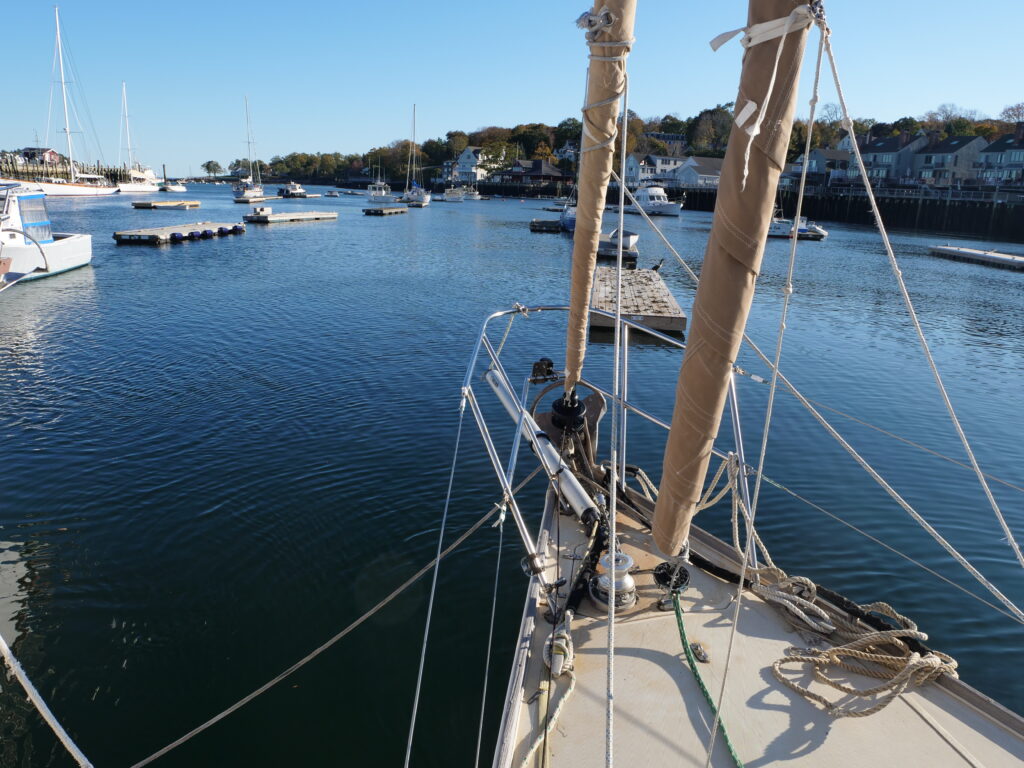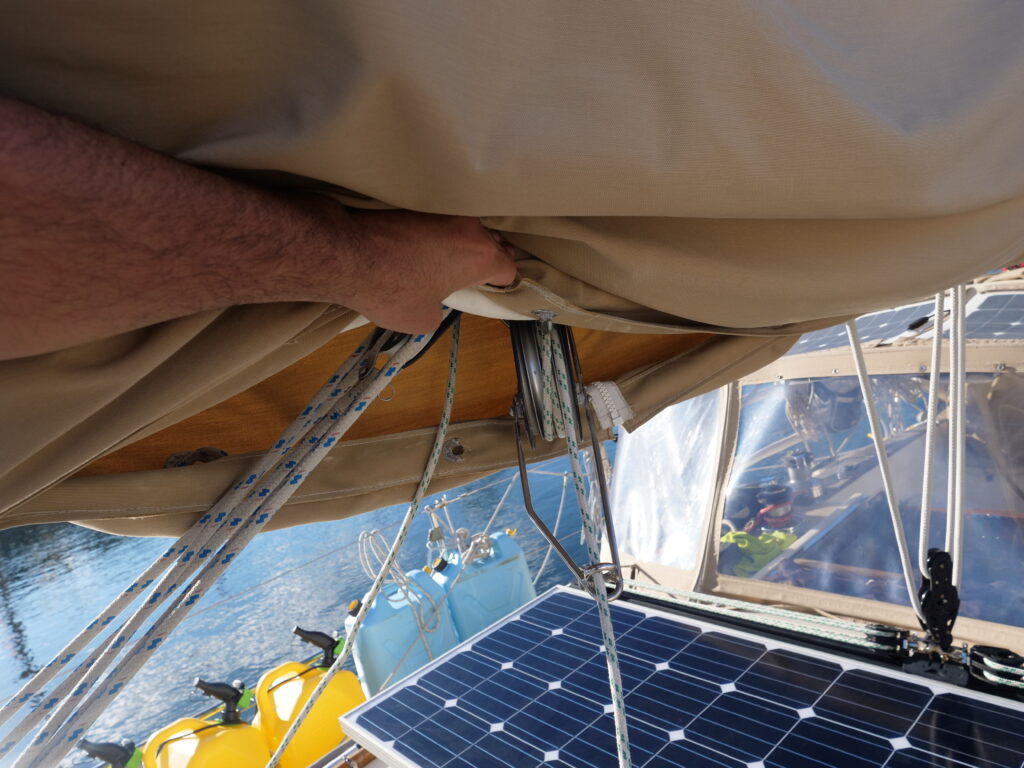
We completed our first two transatlantic’s with three sails; main, 130% jib and asymmetric spinnaker. Our Atlantic loop was completed when we crossed our outbound wake off Sint Martin in April 2019. We sailed just under 8,000 nautical miles in about 10 months. Armed with the knowledge from two ocean crossing under out belts we resolved to make significant improvements to our sail plan in order to increase safety and efficiency. Our 1985 Sabre 36 only holds eighteen gallons of diesel in the main tank (we also carry an additional forty gallons in jerry jugs) so it is imperative that we keep the boat moving under sail in a variety of conditions in order to successfully complete long ocean voyages.

Our crossing to the Azore’s in June 2018 was relatively uneventful scooting across the the top of the Azore high in relatively light air. (In fact we sailed eleven straight days and 1622 nautical miles in glorious conditions without starting the engine and with the kite up for days on end). We were able to average 5.8 knots. We beat out our buddy boat across by eight days!
The 4,000 mile crossing back from Gibraltar to Grenada was a different beast. We left Gibraltar in January 2019 opting to bypass the customary stopover in the Canary Island due to visa limitations as well as a strong hankering for a rum cocktail on a white sandy beach in the Caribbean. By skipping this stop we weren’t able to pick our weather as carefully.
There is an old adage regarding west bound transatlantic’s stating “sail south ‘till the butter melts”. Due to reinforced trades, we stayed further north on our crossing which lead to us to being in the path on an incoming low pressure. This is when our limited sail plan options came back to bite us. As it always seems to go offshore, a cascading series of small problems turns into much larger ones. We were running downwind in about 30 knots attempting to get out of the way of that low pressure when we noticed chafe on our furling line of our reefed jib. Before we could address the issue the line snapped and unrolled the entire jib. We pointed the boat deep downwind to try and relieve some pressure on the sail and blanketed it with the mainsail. As we were trying to rerun the furling line a large wave picked up the transom and careened us into an unintentional gybe. The gybe was un-arrested as our boom brake control line snapped. The force of the gybe blew the end of our traveler off and we would later found out broke some of the mast wedges where the mast passes through the deck at the collar (several hours later we turned on our cabin lights to find our mast swaying back and forth in the cabin without the support at the mast collar, UGH)

When we returned to the U.S. in the fall of 2019 we executed our plan to upgrade our sail plan. We purchased a continuous line furler and bow sprit from Selden. At the same time we also added a Code Zero and Staysail to sail inventory. The continuous line furler performs double duty for us, managing both the code zero and staysail. Precision Sails made built us a special staysail that has a zipper luff to accommodate the anti-torsion cable required for the furler.
Below is a chart of our sailplan with changes mentioned above:
| Head Sails | |
| Asymmetric | 1100 sq ft |
| Code Zero | 574 sq ft |
| Genoa 130% | 424 sq ft |
| Working Jib 100% | 297 sq ft |
| Staysail | 215 sq ft |
| Main | |
| Full | 339 sq ft |
| Reef 1 | 232 sq ft |
| Reef 2 | 144 sq ft |
